
The Atari Jaguar is a home video game console developed by Atari Corporation and released in North America in November 1993. Part of the fifth generation of video game consoles, it competed with the 16-bit Sega Genesis, the Super NES and the 32-bit 3DO Interactive Multiplayer that launched the same year. Powered by two custom 32-bit processors – Tom and Jerry – in addition to a Motorola 68000, Atari marketed it as the world's first 64-bit game system, emphasizing its 64-bit bus used by the blitter. The Jaguar launched with Cybermorph as the pack-in game, which received divisive reviews. The system's library ultimately comprised only 50 licensed games.

Magic Carpet is a 3D flying video game developed by Bullfrog Productions and published by Electronic Arts in 1994. Its graphics and gameplay were considered innovative and technically impressive at the time of its release.

Alien vs Predator is a 1994 first-person shooter developed by Rebellion Developments and published by Atari Corporation for the Atari Jaguar. It was also distributed in Japan by Mumin Corporation, where it became a pack-in game for the console. It is the first entry in the Alien vs. Predator franchise developed by Rebellion. Taking place in a simulation depicting the fall of the Golgotha training base camp, the game offers three playable scenarios: Alien, Predator, or a human of the Colonial Marines. The player is presented with a series of interconnected sublevels and ships to progress through. Each character has different objectives, abilities, weapons, and disadvantages.

Fight for Life is a 1996 fighting video game developed and published by Atari Corporation in North America and Europe for the Atari Jaguar. It was the final game to be developed and published by Atari themselves before dropping support for the platform and merging with JT Storage in a reverse takeover on July 30, 1996, and the last fighting title released for the console. Set in a purgatory dimension known as the Specter Zone, Fight for Life follows eight deceased fighters as they enter a tournament held by a shapeshifting being called the Gatekeeper, who will bestow a second chance at life to the winner. Its gameplay consists of one-on-one fights, with a main eight-button configuration, featuring special moves and the ability to customize character's movesets, as well as four different playable modes.
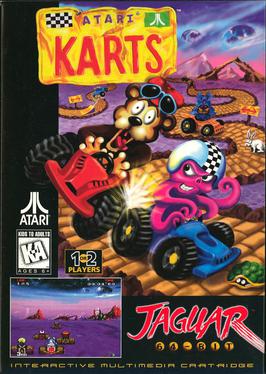
Atari Karts is a kart racing video game developed by Miracle Designs and published by Atari Corporation for the Atari Jaguar in North America on December 22, 1995, and Europe on January 1996. In the game, the players take control of one of several playable characters, each with differing capabilities. One or two players race against computer-controlled characters in four cups consisting of multiple tracks over four difficulty levels. During races, the players can obtain power-ups placed at predetermined points in the tracks and use them to gain an advantage. It plays similarly to Super Mario Kart and features Bentley Bear, main protagonist of the arcade game Crystal Castles (1983).

Highlander: The Last of the MacLeods is an action-adventure video game developed by Lore Design Limited and published by Atari Corporation exclusively for the Atari Jaguar CD first in North America on 30 October 1995 and later in Europe on November of the same year. The first installment in a planned trilogy based upon Gaumont Multimedia and Bohbot Entertainment's Highlander: The Animated Series, which was both a loose spin-off and sequel of the 1986 film of the same name, players assume the role of Quentin MacLeod in an effort to save the Dundee clan from slavers of the evil immortal Kortan. Its gameplay mainly consists of action and exploration with a main eight-button configuration.
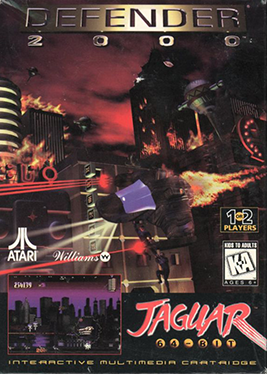
Defender 2000 is a 1996 scrolling shooter video game developed by Llamasoft and published by Atari Corporation for the Atari Jaguar. Part of Atari's 2000 series of arcade game revivals, it is an update of Eugene Jarvis' arcade game Defender (1981). The premise takes place in a future where the Alpha Promixian empire attack mining settlements on distant resource planets. Gameplay is divided into three modes, with the player acting as part of the System Defense Team commanding the Threshold ship to defeat waves of invading aliens while protecting humans.
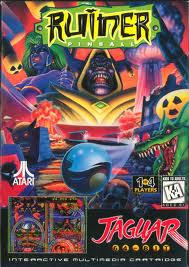
Ruiner Pinball is a 1995 pinball video game developed by High Voltage Software (HVS) and published by Atari Corporation for the Atari Jaguar. The game features two different pinball tables: the nuclear war-inspired Ruiner, and the medieval-themed Tower. Each table contains targets for the player to hit with the ball, increasing their score before the ball is lost. It was marketed as the first title to support the ProController, a redesigned Jaguar controller that added three more face buttons and two triggers.

Iron Soldier is an open world first-person mecha simulation video game developed by Eclipse Software Design and published by Atari Corporation for the Atari Jaguar in North America and Europe on December 22, 1994, then in Europe in January 1995 and later in Japan on March 24 of the same year, where it was instead published by Mumin Corporation. The first installment in the eponymous franchise, the game is set in a dystopian future where industries and machinery has overrun most of the surface on Earth, as players assume the role of a resistance member taking control of the titular mech in an attempt to overthrow the dictatorship of Iron Fist Corporation, who have conquered the world through usage of military force.

Robinson's Requiem is a 1994 survival simulation video game developed and originally published by Silmarils exclusively in Europe for the Atari ST, Atari Falcon and Amiga. Taking place in the 22nd century where Earth and colonized planets are facing overpopulation, the game sees players assuming the role of Robinson officer Trepliev 1 from the Alien World Exploration department in his attempt to escape imprisonment from the fictional planet of Zarathustra alongside another AWE Robinson named Nina1, while facing several hostile creatures and dangers in order to survive.

Deus is a 1996 survival simulation game developed by Silmarils and published by ReadySoft. It is the sequel to Robinson's Requiem.

Super Burnout is a motorcycle racing video game developed by French studio Shen Technologies SARL and co-published by Atari Corporation and Virtual Xperience exclusively for the Atari Jaguar in North America and Europe in July 1995. It was also published in Japan by Messe Sansao during the same period. It is the first title to be created by Shen Technologies.

Missile Command 3D is a 1995 shoot 'em up video game developed by Virtuality Entertainment and published by Atari Corporation for the Atari Jaguar. Part of Atari's 2000 series of arcade game revivals, it is an update of Dave Theurer's arcade game Missile Command (1980). The plot takes place in a country attacked by foreign nations and on a distant planet where alien forces invade a human colony. Gameplay is divided into three modes, with the player defending six cities from incoming missiles by launching anti-ballistic missiles from three bases. It is the only officially released game compatible with the unreleased Jaguar VR peripheral.

FlipOut! is a tile-matching puzzle video game developed by Gorilla Systems Corporation and originally published by Atari Corporation for the Atari Jaguar in Europe on July 7, 1995 and later in North America on August 28 of the same year. It is one of the first titles developed by Gorilla Systems.

Power Drive Rally is a 1995 racing video game developed by Rage Software and published by Time Warner Interactive for the Atari Jaguar. It is a conversion of the 1994 racing game Power Drive, which was released on multiple platforms. Revolving around rallying, the game features six real vehicles and circuits based on eight locations around the world. The players participate in various racing events and earn money by qualifying or winning to continue the rally season and repair damage to the car.
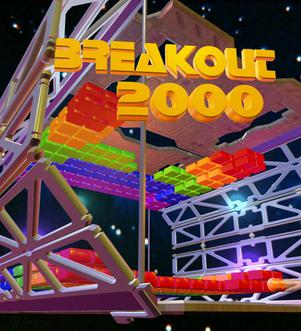
Breakout 2000 is a 1996 action video game developed by MP Games and published by Telegames for the Atari Jaguar. Part of the 2000 series by Atari Corporation, it is a remake of the arcade game Breakout (1976), and one of the last officially licensed releases for the platform. Featuring a similar premise to Breakout, the player must destroy a layer of brick lines by repeatedly bouncing a ball spawned off a paddle into them and keep it in play. Gameplay modifications to the original game include a third-person perspective behind the paddle in a pseudo-3D playfield, power-ups, bonus levels, enemies, varying level designs, and multiplayer features.

Iron Soldier 2 is an open world first-person mecha simulation video game developed by Eclipse Software Design and published by Telegames for the Atari Jaguar and Atari Jaguar CD on December 30, 1997. It is the sequel to Iron Soldier.
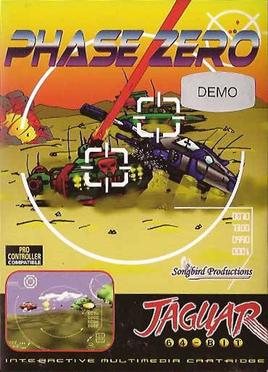
Phase Zero is an unreleased action-shooter video game that was in development by Hyper Image Productions and originally planned to be published by Atari Corporation on a scheduled September 1995 release date exclusively for the Atari Jaguar. It was the only game in development by Hyper Image.

Zero 5 is a shooter video game developed by Caspian Software and published by Telegames exclusively for the Atari Jaguar on September 29, 1997. It is a remake of the 1994 Atari STe title of the same name and one of the last licensed releases to be published for the Jaguar after being discontinued in 1996 by Atari Corporation, who merged with JT Storage in a reverse takeover prior to its eventual launch.





















